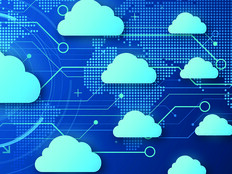Nutanix notes that “remote sites require robust software platforms that can support specialized hardware and, more importantly, quickly and securely process data on-site, eliminating the challenges of transmitting vast amounts data back to a centralized cloud over unreliable network connections.”
Mackevicius says the government is “going through a technology transformation that is unlocking new mission scenarios for government agencies that were simply not possible before.”
Smart sensors and connected devices are changing the way agencies approach a variety of problems, she says “from equipment maintenance to measuring air quality, smart cities to military outposts, while new devices are increasingly cloud-connected by default —whether it’s a traffic light or a rescue vehicle.”
At the same time, Mackevicius says, hybrid cloud is evolving from being the integration of a data center with the public cloud to becoming units of computing available at even the world’s most remote destinations, working in concert with public cloud. “Now more than ever before, government can bring the power of cloud to missions around the globe,” she says.
“Bring these two technology trends together, with AI running across all systems, and we enter the era of the intelligent cloud and intelligent edge,” Mackevicius says. “And while we expect every industry to benefit as these technologies advance, the work of government in particular will be changed by the ability to plan further, gather information more efficiently, and deliver insight where it is needed most.”
MORE-FROM-FEDTECH: See how the Navy uses VR to train aircraft carrier crews.
How Is Edge Computing Being Used in Government?
Edge computing is being used in a variety of agencies. For example, Dell partners with Microsoft to deliver cloud capabilities to tactical environments for the Air Force’s air operations centers around the globe. These are essentially military versions of the Federal Aviation Administration that allow the Air Force to manage, control and protect all of its air assets. With Microsoft Azure Stack, the Air Force can build next-generation apps in the tactical cloud.
The Air Force has been able to save almost $1 million a week in tanker refueling costs via edge and cloud computing, Chehreh noted. Using the Dell Pivotal Cloud Foundry platform, the company helped train Air Force developers to build and deploy a tanker refueling application, he says. The software provides better predictive logistics, especially for refueling planes when they are in the air, he says.
The Marines and Special Forces are also using deployable, tactical clouds on missions, Chehreh says. That gives them improved command and control when they are out at the tactical edge. Soldiers are able to run more complex and sophisticated applications at the tactical edge that create situational awareness, according to Chehreh, such as 3D-rendering applications or geospatial apps. Soldiers can dynamically change the applications based on the changing mission on the ground.
For example, soldiers may be on a monitoring mission, but when they get to a specific area, something may have changed that turns the mission into an intelligence, surveillance and reconnaissance mission. Edge computing allows them to reconfigure their edge devices and bring up apps that allow them to collect more information and perform better analysis on site, all while connected to or disconnected from the network.
Last September, Nutanix inked a $20 million deal with the Defense Department for the DOD to use Nutanix software to operate 15 remote sites running two different networks.
DOD is using the Nutanix Enterprise Cloud Platform software for its reliability and resiliency even at the edge after its previous solution was crippled by power losses and complex operations, according to Nutanix. The power losses resulted in IT teams spending hours trying to get the previous solutions back to life to avoid data loss, to the detriment of operations near these sites.
In the civilian realm, FEMA also uses Dell edge computing solutions — both endpoints and tactical clouds — in its disaster response vehicles, both land-based and sea-based, in a very similar fashion, Chehreh says. FEMA staff can set up a portable tactical network that is satellite-based, and can use it to collect visual data from drones before they send human rescue attempts forward. FEMA can also use edge computing to do facial recognition onsite to collect information about disaster survivors.
The Agriculture Department uses edge computing as well, Chehreh says, for activities like heavier geological surveys. For example, they can use it to perform onsite soil sample analysis. “It really is a powerful solution set when you think of the edge, across any mission segment in the government, to include civilian,” he says.
MORE-FROM-FEDTECH: Find out what digital twin technology is and how agencies can use it.
The Future of Edge Computing in Government
Earlier this month, Microsoft and Dell announced the release of the Dell EMC Tactical Microsoft Azure Stack and the Azure Data Box family of products, which Mackevicius says will help agencies with remote operations have access to the full range of cloud data analytics.
Chehreh says in the consumer world, the richer the data services are, the more consumers use data services. Such has been the case with the advent of smartphones and mobile apps like video streaming. That requires more compute, memory and storage in smartphones.
The same will be true in government, especially as artificial intelligence and advanced robotics become more widely deployed. Edge computing’s place within the enterprise is “going to grow significantly,” Chehreh says.
“As devices become smarter, they are going to require those enhanced compute and storage capabilities at the edge in order to deliver that richer human-to-machine experience that is the era we’re going into” he says.











